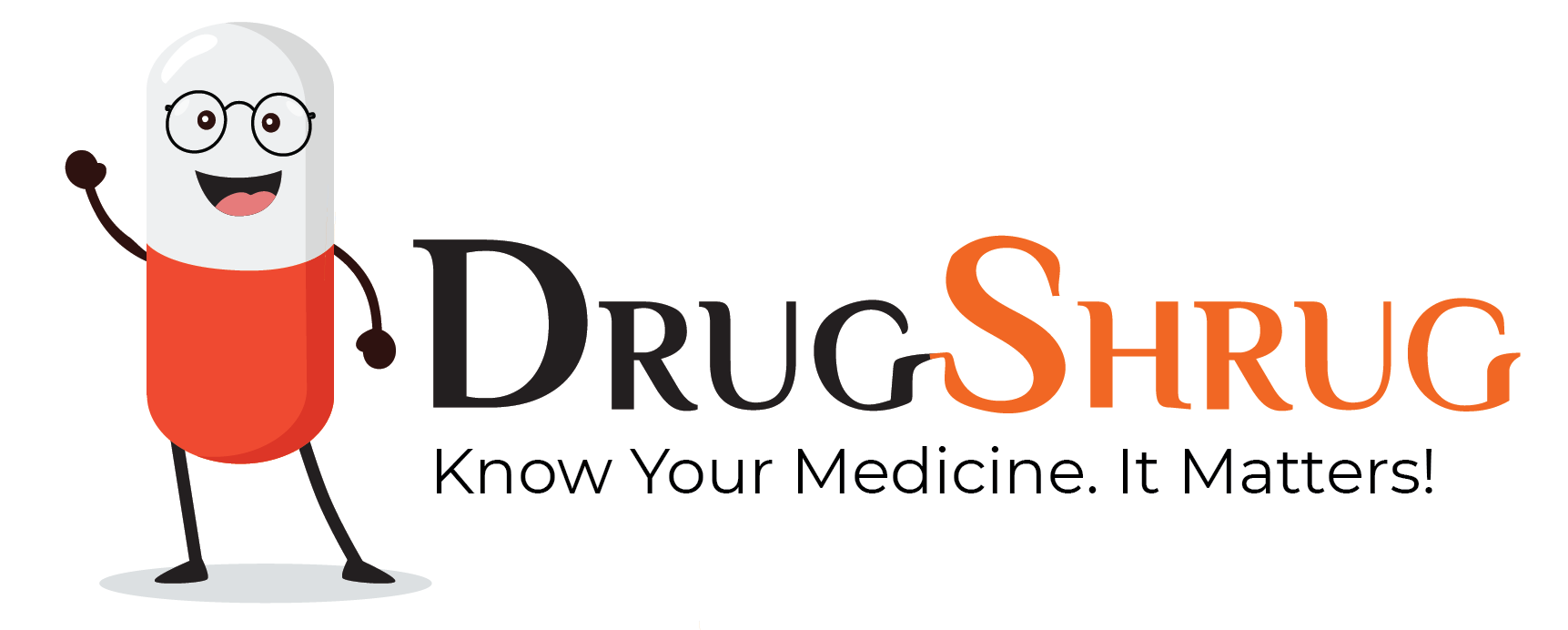Introduction to Side Effects and Adverse Effects
Are you familiar with the dance between side effects and adverse effects when it comes to medications? It’s like navigating a complex tango, where knowing the difference can make all the difference in your health journey. Join us as we unravel the mystery behind these terms, explore their nuances, and equip you with valuable insights to empower your medical decisions. Let’s dive into the world of pharmaceutical intricacies together!
The Causes of Side Effects and Adverse Effects
When it comes to understanding the causes of side effects and adverse effects of drugs, there are various factors at play. One primary reason is the individual’s unique reaction to a particular medication. Each person’s body chemistry differs, leading to varied responses.
Additionally, the dosage and frequency of drug intake can influence the likelihood of experiencing side effects or adverse reactions. Sometimes, an incorrect dose or irregular use may trigger unwanted effects on the body.
The type of drug itself also plays a crucial role in determining potential side effects and adverse outcomes. Some medications have a higher risk profile due to their chemical composition or mechanism of action.
Moreover, pre-existing health conditions or underlying diseases can interact with drugs, amplifying their side effects or causing unexpected adverse reactions. It’s essential for healthcare providers to consider these factors when prescribing medications.
A comprehensive understanding of these causes can help individuals make informed decisions about their treatment plans and minimize the risks associated with drug therapy.
Let’s Explore 33 Difference Between Side Effects and Adverse Effects of Drugs
Let’s dive into the distinction between side effects and adverse effects of drugs. Side effects are commonly experienced reactions to medications, such as nausea or drowsiness, that may occur alongside the intended therapeutic effect. On the other hand, adverse effects are more severe or harmful reactions that can have serious consequences on one’s health.
Side effects are often mild and temporary, while adverse effects can be life-threatening and require immediate medical attention. Understanding these differences is crucial for patients to recognize when a reaction warrants concern.
It’s essential for healthcare providers to educate patients about potential side effects versus adverse effects before starting a new medication regimen. This knowledge empowers individuals to make informed decisions about their health and wellbeing.
By being aware of these nuances, patients can effectively communicate with their healthcare team if they experience any unexpected reactions while taking medication. This proactive approach promotes safety and ensures appropriate management of drug-related complications.
| S. No. | Aspect | Side Effects | Adverse Effects |
| 1 | Definition | Unintended but usually mild effects of a drug | Unintended and potentially harmful effects of a drug |
| 2 | Severity | Usually mild | Can range from mild to severe |
| 3 | Frequency | Common | Less common than side effects |
| 4 | Predictability | Often predictable | May not always be predictable |
| 5 | Impact on Treatment | May not require discontinuation of treatment | May necessitate discontinuation of treatment |
| 6 | Relationship to Dose | Dose-dependent | May or may not be dose-dependent |
| 7 | Intended vs. Unintended | Unintended | Unintended |
| 8 | Duration | Typically short-lived | Can be short-lived or prolonged |
| 9 | Clinical Manifestations | Generally benign manifestations | Can manifest as serious medical conditions |
| 10 | Reporting Requirement | Usually reported to healthcare provider | Often required to be reported to regulatory agencies |
| 11 | Regulatory Considerations | Less regulated | Subject to regulatory scrutiny and reporting requirements |
| 12 | Mechanism of Occurrence | Often related to pharmacological action | Can be related to various factors such as individual susceptibility or drug interactions |
| 13 | Risk-Benefit Ratio | Generally favors benefits over risks | May significantly alter risk-benefit ratio |
| 14 | Intentionality | Not intended by the prescriber | Not intended by the prescriber |
| 15 | Potential Harm | Usually minimal harm | Can cause significant harm or complications |
| 16 | Impact on Compliance | May affect compliance depending on severity | Can significantly impact compliance |
| 17 | Documentation | Often documented in drug labeling | Documented in drug labeling and regulatory filings |
| 18 | Clinical Significance | May not necessarily affect clinical outcomes | Can impact clinical outcomes |
| 19 | Management Approach | Often managed symptomatically | May require specific interventions |
| 20 | Systemic Effects | May affect multiple body systems | Can affect multiple body systems |
| 21 | Prevalence | Common | Less common than side effects |
| 22 | Pharmacokinetics Interactions | May or may not affect drug metabolism | Can alter drug metabolism or pharmacokinetics |
| 23 | Impact on Quality of Life | Generally less impact | Can significantly impact quality of life |
| 24 | Patient Perception | Often tolerated as part of treatment | May lead to dissatisfaction with treatment |
| 25 | Reversibility | Often reversible | May or may not be reversible |
| 26 | Monitoring Requirement | May require monitoring depending on severity | Often requires close monitoring |
| 27 | Causality Assessment | Often straightforward | May require complex causality assessment |
| 28 | Presentation Timing | Can occur immediately or delayed | Can present immediately or after prolonged use |
| 29 | Psychological Impact | Generally minimal psychological impact | Can lead to anxiety or psychological distress |
| 30 | Impact on Treatment Goals | May not necessarily impact treatment goals | Can hinder achievement of treatment goals |
| 31 | Patient Education Requirement | May necessitate patient education | Often requires extensive patient education |
| 32 | Clinical Trials Considerations | Considered in clinical trial design | Important aspect in clinical trial design |
| 33 | Regulatory Reporting Threshold | Generally lower threshold for reporting | Higher threshold for reporting |
Common Side Effects of Drugs
When taking medications, it’s important to be aware of the potential side effects that may occur. Common side effects of drugs can vary depending on the type of medication and individual response.
Some common side effects include nausea, dizziness, headache, fatigue, and changes in appetite. These can often be mild and temporary as your body adjusts to the medication.
Skin reactions like rashes or itching are also commonly reported side effects. It’s essential to monitor any changes in your skin and consult with a healthcare provider if these symptoms persist or worsen.
Digestive issues such as diarrhea or constipation are another frequent occurrence when starting a new medication regimen. Staying hydrated and maintaining a balanced diet can help alleviate these symptoms.
Remember, everyone reacts differently to medications so what might be common for one person may not affect another in the same way. Always read the drug information provided by your healthcare provider and report any unusual side effects promptly.
Serious Adverse Effects of Drugs
Serious adverse effects of drugs can have a significant impact on an individual’s health and well-being. These effects are more severe than common side effects and may require immediate medical attention. It is crucial to be aware of the potential serious adverse effects that certain medications can cause. Some of these effects include allergic reactions, organ damage, and even life-threatening conditions like Stevens-Johnson syndrome or anaphylaxis.
Patients should always read the medication leaflet carefully and consult their healthcare provider if they experience any unusual symptoms while taking a drug. Serious adverse effects can manifest differently in each individual, so it’s vital to monitor your body’s response to medication closely. In some cases, the benefits of a drug may outweigh the risks, but it’s essential to weigh these factors with your healthcare provider.
If you notice any concerning symptoms after starting a new medication, do not hesitate to seek medical help immediately. Ignoring serious adverse effects can lead to further complications or exacerbate existing health issues. Your health should always be a top priority when managing medication regimens.
Differences Between Side Effects and Adverse Effects
Understanding the distinctions between side effects and adverse effects of drugs is crucial for anyone taking medication. Side effects are typically mild, such as drowsiness or a headache, and often subside as your body adjusts to the medication. On the other hand, adverse effects are more severe and can pose a serious risk to your health.
While side effects may be bothersome but manageable, adverse effects require immediate medical attention to prevent any complications. It’s important to differentiate between the two so that you can address them appropriately.
Side effects are common and expected reactions to a drug, whereas adverse effects are unexpected and potentially harmful outcomes. Your healthcare provider can help determine which category your symptoms fall under.
In some cases, what starts as a seemingly harmless side effect may escalate into an adverse reaction if left untreated. Monitoring how you feel after starting a new medication is key in identifying any concerning signs early on.
How to Minimize the Risk of Side and Adverse Effects
When it comes to minimizing the risk of side effects and adverse effects from medication, there are a few key strategies to keep in mind. Always follow the prescribed dosage and frequency as directed by your healthcare provider. It’s essential not to self-medicate or alter your treatment plan without consulting a professional.
Additionally, be proactive about researching potential side effects of any medication you’re prescribed. Understanding what to expect can help you identify any unusual symptoms early on. Keeping an open line of communication with your healthcare provider is crucial; don’t hesitate to reach out if you have concerns or experience unexpected reactions.
Moreover, maintaining a healthy lifestyle through proper nutrition, regular exercise, and adequate rest can contribute to overall well-being and potentially reduce the likelihood of adverse reactions. Consider keeping a journal to track how you feel while taking medication – this information can be valuable for both yourself and your healthcare provider in monitoring your progress effectively.
Seeking Medical Help for Side and Adverse Effects
If you experience any unusual symptoms after taking medication, it’s crucial to seek medical help promptly. Your health should always be a top priority, so don’t hesitate to reach out for professional assistance.
Inform your healthcare provider about any side effects or adverse reactions you’re experiencing. They can offer guidance on whether the symptoms are normal or require immediate attention.
Do not ignore persistent side effects, as they could indicate a more serious issue that needs medical intervention. It’s better to be safe than sorry when it comes to your well-being.
In case of severe or life-threatening adverse effects such as difficulty breathing, chest pain, or sudden vision changes, seek urgent medical care without delay. Your health and safety are paramount in such situations.
Remember that healthcare professionals are there to support you and ensure your medication is both effective and safe for you. Don’t hesitate to ask questions or voice concerns during consultations – communication is key in managing side effects effectively.
Conclusion
Understanding the differences between side effects and adverse effects of drugs is crucial for patients to make informed decisions about their healthcare. By being aware of the potential risks associated with medication, individuals can take proactive steps to minimize these effects and seek timely medical help when needed. Remember to always consult with a healthcare professional if you experience any concerning symptoms while taking medications. Stay informed, stay safe, and prioritize your well-being above all else.


